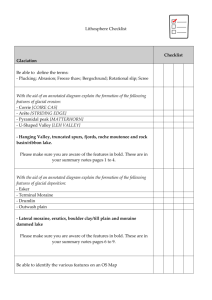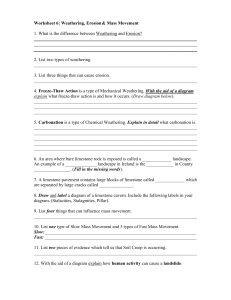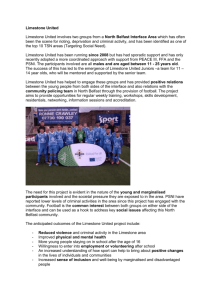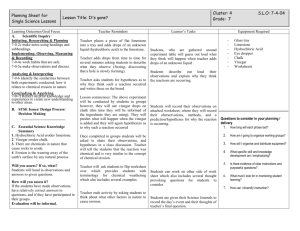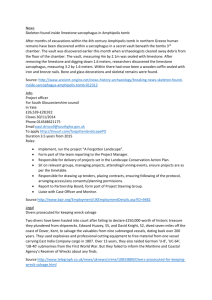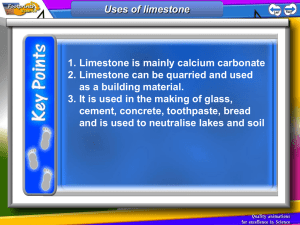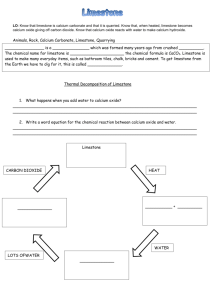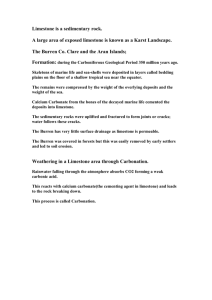Lithosphere Checklist
advertisement
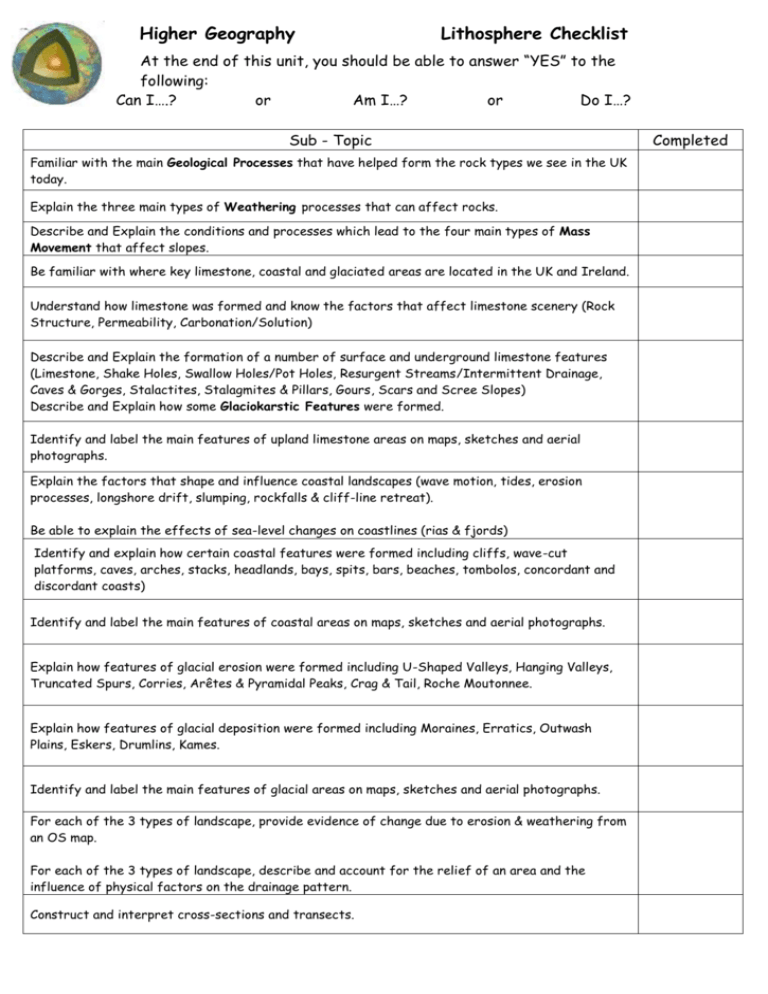
Higher Geography Lithosphere Checklist At the end of this unit, you should be able to answer “YES” to the following: Can I….? or Am I…? or Do I…? Sub - Topic Familiar with the main Geological Processes that have helped form the rock types we see in the UK today. Explain the three main types of Weathering processes that can affect rocks. Describe and Explain the conditions and processes which lead to the four main types of Mass Movement that affect slopes. Be familiar with where key limestone, coastal and glaciated areas are located in the UK and Ireland. Understand how limestone was formed and know the factors that affect limestone scenery (Rock Structure, Permeability, Carbonation/Solution) Describe and Explain the formation of a number of surface and underground limestone features (Limestone, Shake Holes, Swallow Holes/Pot Holes, Resurgent Streams/Intermittent Drainage, Caves & Gorges, Stalactites, Stalagmites & Pillars, Gours, Scars and Scree Slopes) Describe and Explain how some Glaciokarstic Features were formed. Identify and label the main features of upland limestone areas on maps, sketches and aerial photographs. Explain the factors that shape and influence coastal landscapes (wave motion, tides, erosion processes, longshore drift, slumping, rockfalls & cliff-line retreat). Be able to explain the effects of sea-level changes on coastlines (rias & fjords) Identify and explain how certain coastal features were formed including cliffs, wave-cut platforms, caves, arches, stacks, headlands, bays, spits, bars, beaches, tombolos, concordant and discordant coasts) Identify and label the main features of coastal areas on maps, sketches and aerial photographs. Explain how features of glacial erosion were formed including U-Shaped Valleys, Hanging Valleys, Truncated Spurs, Corries, Arêtes & Pyramidal Peaks, Crag & Tail, Roche Moutonnee. Explain how features of glacial deposition were formed including Moraines, Erratics, Outwash Plains, Eskers, Drumlins, Kames. Identify and label the main features of glacial areas on maps, sketches and aerial photographs. For each of the 3 types of landscape, provide evidence of change due to erosion & weathering from an OS map. For each of the 3 types of landscape, describe and account for the relief of an area and the influence of physical factors on the drainage pattern. Construct and interpret cross-sections and transects. Completed
